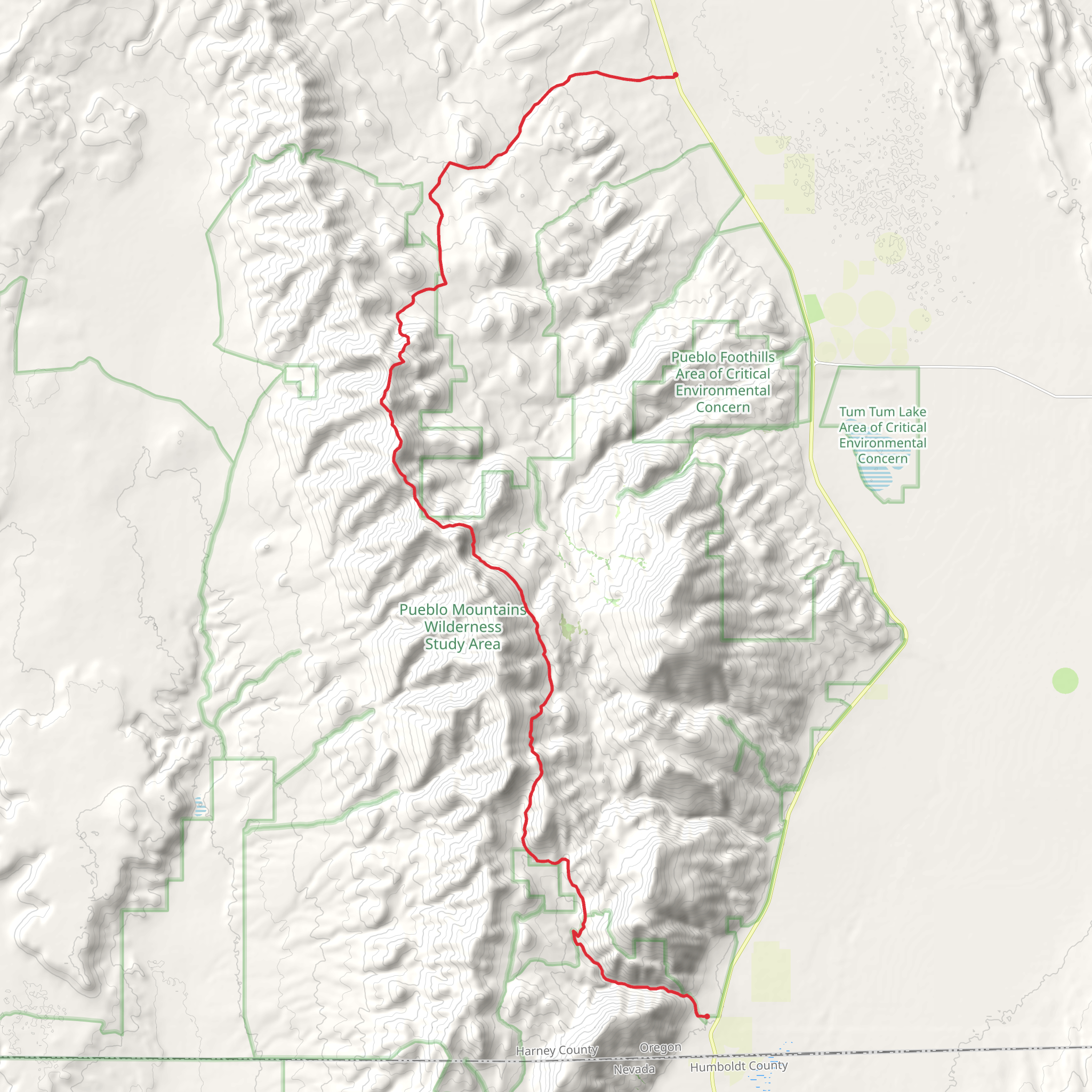Download
Preview
Add to list
More
41.2 km
~3 days
1464 m
Multi-Day
“Trek the wild Pueblo Mountain Section for a rugged, solitary high-desert adventure.”
Embarking on the Oregon Desert Trail's Pueblo Mountain Section, hikers will traverse approximately 41 kilometers (25.5 miles) of rugged, high-desert landscape. This challenging point-to-point trail begins near Humboldt County, Oregon, and boasts an elevation gain of around 1400 meters (4593 feet), presenting a strenuous journey even for seasoned adventurers.Getting to the TrailheadTo reach the starting point of the Pueblo Mountain Section, hikers can drive to the vicinity of Denio, Nevada, which is the nearest community to the trailhead. From Denio, travel north on Fields-Denio Road, which eventually turns into a gravel road leading towards the Oregon border. The trailhead is located just across the state line in Oregon, near the base of the Pueblo Mountains. Public transportation options are limited in this remote area, so a personal vehicle or a rented car is the most feasible way to access the trail.Navigating the TrailThe Oregon Desert Trail is known for its remoteness and lack of established trail markers, so hikers should be well-versed in navigation. HiiKER is an invaluable tool for this purpose, offering detailed maps and GPS coordinates to help keep you on track. Be sure to download the necessary maps for offline use, as cell service is unreliable in this area.Landmarks and Natural FeaturesAs you begin your hike, the Pueblo Mountains will loom on the horizon, a stunning backdrop to the sagebrush and juniper-dotted landscape. The trail meanders through a variety of terrains, including rocky canyons, rolling hills, and flat basins. Around the 10-kilometer (6.2-mile) mark, you'll encounter a series of small creeks, which can be a welcome sight in the arid environment, though water flow can be seasonal and unreliable.The halfway point of the trail offers a panoramic view of the surrounding desert, with opportunities to spot wildlife such as pronghorn antelope, mule deer, and various raptors soaring above. The flora and fauna here are well-adapted to the harsh conditions, and hikers will witness a unique ecosystem that thrives under extreme temperatures and limited water.Historical SignificanceThe region holds a rich tapestry of history, with evidence of Native American presence dating back thousands of years. The landscape has also seen its share of pioneers and settlers during the westward expansion. As you hike, you may come across old mining sites, remnants of homesteads, and other historical artifacts that tell the story of human perseverance in this challenging environment.Preparation and SafetyGiven the trail's difficulty and isolation, hikers should be self-sufficient and well-prepared. Carry plenty of water, as sources along the trail are scarce and often not potable without treatment. Be ready for rapid weather changes and pack appropriate gear for both hot days and cold nights. It's also wise to inform someone of your itinerary and expected return time due to the remote nature of the trail.Remember, the Oregon Desert Trail's Pueblo Mountain Section is a test of endurance and self-reliance, offering a profound sense of solitude and connection with the wild. With careful planning and respect for the desert's harsh beauty, this trail can provide an unforgettable adventure.
What to expect?
Comments and Reviews
User comments, reviews and discussions about the Oregon Desert Trail - Pueblo Mountain Section, Oregon.
4.67
average rating out of 5
9 rating(s)

